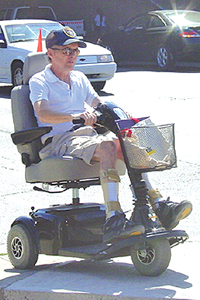Part B: The Road Safety Audit Process
6.0 Construction Road Safety Audits
In the lifecycle of a project, when the detailed design drawings are complete, the project is ready to proceed to the construction phase. As shown in Exhibit 3.1, three different types of RSAs are possible during the construction phase, as follows:
- An RSA of a work zone traffic control plan.
- An RSA of changes in design during construction.
- A pre-opening RSA .
Prompt list 4 provided at the end of this guideline lists the items that could be within the scope of a work zone traffic control plan RSA. Prompt lists 3 and 5 may be of assistance in conducting RSAs of changes in design during construction. RSAs of changes in design during construction and RSAs of work zone traffic control plans are not discussed further in this version of the guideline.
This chapter will discusses pre-opening RSAs. This type of RSA permits the RSA team to conduct a thorough on-site investigation of the existing road that will complement design drawings and other project data provided to the audit team.
6.1 Pre-Opening Road Safety Audits
When pre-opening RSAs are usually performed.
Pre-opening RSAs are usually performed on newly constructed road facilities immediately prior to their opening. They represent the last opportunity that an RSA team has to identify potential safety concerns before the facility is opened to road users.
What is the purpose of a pre-opening RSA ?
- Identify and address any safety issue prior to the post-construction stage.
- Evaluate the safety of road features not apparent or indicated on the detailed design drawings.
- Determine if the needs of all road users have been adequately and safely met.
- Confirm that any temporary signage, temporary pavement markings, construction equipment, barriers, fencing, materials and debris have been removed from the newly constructed road facility.
- Review firsthand the interaction of the various design elements with each other and with the surrounding road network.
- Identify anything missed during a previous audit.
- Follow-up on any issue identified in a previous audit.
The RSA team will have an opportunity to conduct a detailed inspection of the road facility and points of connection with the existing road network. They will want to conduct the field investigation by driving through the site and walking along key stretches by foot to see the entire road facility first hand, both in daylight and in darkness. A review at night will be extremely helpful as the layout of the road will look completely different in darkness. Issues of inadequate lighting, misleading delineation, and hidden roadside hazards may be identified during the nighttime review.
The field investigation will be a critical component of the RSA team's evaluation. In addition, the RSA team may be under a time constraint and may need to provide a quick response to the project owner and design team. To expedite the process, the RSA team may conduct their field investigation and then meet with the project owner and design team immediately afterwards while still on-site to show them firsthand any identified safety issues and suggested improvements.
This will allow the project owner and design team to address the identified safety issues immediately, minimizing any delay to the opening of the road facility. The RSA team may then follow up with their audit report, and the project owner and design team may complete the corresponding response report after the opening of the road facility.
Coordinating activities to reduce delay.
During the site visit, RSA team members with a police and maintenance background may prove to be a valuable addition to the RSA team.
Since the road facility will have been built in its entirety, it will likely not be feasible for the RSA team to make suggestions involving any physical changes to the cross section, layout, or alignment of the roadway. Suggestions will likely focus on changes to illumination, signage, delineation, pavement markings, roadside barriers, removal of fixed object hazards, or on minor structural changes (addition of a wheelchair ramp). Yet even minor changes to the road facility can significantly reduce safety risk at a minimal cost.
Scope of suggestions in pre-opening RSAs.
Along with any additional project data provided by the project owner and design team, adjacent facilities such as hospitals, fire stations, nursing homes, schools, playgrounds, and warehouses will provide clues as to what types of road users may be present.
Pre-opening RSAs should not be seen as simply conformance checks against existing standards, or even a check to ensure that the road facility was built according to the design drawings, although both of these may be determined in the field.

